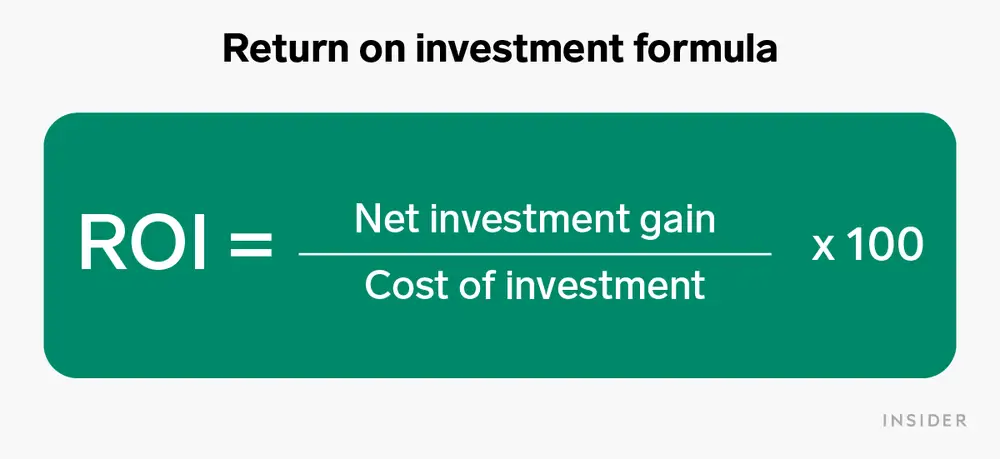Embedding a people-first culture in a start-up environment is a noble goal, but it can be a difficult task to achieve. Start-ups are often characterized by a fast-paced, high-pressure environment, where time, money, and resources are limited and the focus is on rapid growth. There is often a powerful commercial ($$$) bias from the founder(s), which is often reinforced by their investors. No surprise there – as companies exist to make a profit, but if the level of emphasis and prioritisation are placed solely on commercial success (revenues and profit only), the pressure is solely on Sales the Marketing – you will struggle to install your people-first vision.
Everything the company does either feeds that focus or is derived as a result of seeking commercial success. That bias can be limiting. The ‘Chief Resource Distribution Officer’ (Founder, CEO, CFO, CRO) may be narrowly focused on monetary targets only – which misses the broader consideration as to how to achieve those targets through intelligent people strategy.

I’ve worked at over 12 different start-ups around the world and across several different industry sectors. I continuously witnessed the same dynamics revolving around the following questions:
Are we just here to make money, corner markets and crush the competition? Or are we thinking about how a people-first approach – making a huge bet on attracting, recruiting, onboarding, training, nurturing, and developing the best people money can buy – hoping they will help us achieve our mission and vision for our company sustainably?”
In my experience – this was never an easy debate as there were powerful forces on both sides of this question.
My CFO would say, “Prove how this people-first formula works – let’s see the numbers and the timings before I sign up for anything here.”
My CEO said, “I care about our people of course, but that’s a huge leap of faith to say that if we care and look after our people well, they will give back exponential returns.”
My CRO would say, “I get what you’re talking about – but we’re measured in numbers, customers, conversions, and revenue. I honestly don’t have much time for fancy people-first programs unless they’re going to immediately hit my numbers.”
And therein lies your challenge as a strategic HR leader – being hyper-specific with what your people-first program looks like, how it’s going to impact the top and bottom line, knowing when it will do so, and to what degree will it positively impact the commercial pressure points facing your top executives.
Over the last 10-15 years, companies of all sizes and shapes have been making big bets on of People First – The Rest Will Flow – philosophy. Some CEOs and leadership teams took this to heart, put loads of money and resources into creating a beautiful, creative, tolerant, and embracing culture in place, and then sought to ensure that all the component pieces were there to support a brilliant employee experience. New modes of communication, decision-making, delegation of authority, flat org structures, and cross-functional teams were experimented with at employers such as Spotify, Apple, Haier, and Zappos and plenty of great ideas around the challenge of start-up org innovation have been floating around. Most have been experiments and treated as such. These companies specifically sought to break legacy models – because they don’t allow for speed, agility, or innovation flow, and nor do they empower employees covering multiple remits to make important decisions themselves. Thus they can’t scale the company.
But some of these experiments have failed too. Spotify has been through multiple iterations of organisational design – all of which were meant to be people-first initiatives. But because they lacked the anticipated outcomes, suffered from not having comfort and competence among team members, and were breaking old molds and trying new ideas – some will always inevitably fail. The trick here is to engage with a design-centered approach – using experimentation, A/B testing, learning from failure, and ensuring continuous improvement. No one ever gets it right the first time – but making a concerted effort to experiment with new approaches is essential as evidence to employees that at least your trying to improve.
All of the previously mentioned companies are sitting on huge piles of cash – and likely aren’t panicked about experimenting with new ideas around how best to treat people, drive a people-first approach, pay competitively, provide ample career paths, and pay for oodles of leadership and management development to make sure people are well looked after, directed, supported and coached.

The start-ups I worked with were moon shots. There was never a level of certainty that we were going to make it – and the money invested in us reflected a level of insecurity that we were the next big thing. So we had to make do with creating employee-centred policies (family leave, personal leave, unlimited holiday, etc.) as well as ample benefits covering the entirety of an individual’s life, competitive pay where possible, clear career paths, training budgets, and time allotted to learning. Also, unforgettable team events, loads of recognition openly shared, and a strong culture, powered by incredible values that we all helped write and codify together.
That’s a great starting point – and you don’t have to go broke getting there. But you have to make sure your leadership team lives and breathes these values, backs these plans, and looks after their people with capability, skill, and commitment. Equally – you need to ensure that these elements are updated, in synch with current relevance to the employees’ experience, and that there isn’t something you’re missing. Check-in, listen, collect feedback, and understand what your people need, desire, and crave. Then try your best to provide it when you can afford to.
This can make it challenging to create an environment that puts a company’s people first. To do so, start-ups must be aware of the potential pitfalls and challenges associated with embedding a people-first culture.
One of the biggest challenges of embedding a people-first culture in a start-up is a lack of resources. Start-ups often do not have the resources to invest in training and development programs, as well as other initiatives that can help foster a people-first culture. It can be difficult to provide employees with the tools they need to succeed while also creating a culture of respect, inclusion, and trust. But here’s an idea – train one another. Start mini-hackathon half-days where your Development team rotates around different coding challenges, discusses how they solved problems in the past, and talks about what the future holds. Pick your most respected leaders and have them train the management team how to resolve conflicts, onboard new hires, coach for improvement, and handle poor performance issues.

Your company is full of experts with lots of useful ‘scar tissue’ from which they’ve learned lessons that are teachable. Take advantage of this beloved resource as there is nothing more compelling than being taught by those around you. It creates powerful bonds, new levels of respect, and a heightened sense of self-belief in those who do the training. You don’t need to break the bank. Tools such as those here on the G2 link, allow you to provide external online training, but also to author internal training, which you can make available for everyone there, and those yet to come.
Another challenge is maintaining the culture during times of growth. As a start-up grows, it is important to ensure that the people-first culture is maintained. This can be difficult as the company expands and new employees are hired. New employees may not be aware of the company’s early journey or its mythology. They don’t necessarily with the same values and may not understand the importance of a people-first culture. This can lead to a breakdown in communication, trust, and respect, which can in turn lead to a decrease in morale and productivity.
That’s why it’s essential that you embed your values and cultural behaviours into every people system, from recruitment through to retirement that have an impact – like pay, reward, performance development, and promotions. Your values are your published and conscious, behavioural DNA. It’s sacred stuff – without which you are just another bunch of hard-working people trying to make some dosh.

Finally, it can be difficult for start-ups to create an environment with a people-first culture when there is a lack of clear leadership. Start-ups often rely on a small team of founders or executives to lead the company. If these individuals do not have a clear vision and understanding of how to foster a people-first culture, it can be difficult to create an environment with consistency – which every employee will witness every day. The values, cultural norms, relationship with employees, and unspoken contracts between everyone there depend on how the leadership team embraces, talks about, and acts out a people-first approach – in every circumstance. Making sure your people-first approach is carefully and consciously adhered to in difficult times when making hard choices – will be closely observed by everyone there. The more consistently your leaders refer to, connect with, and consciously illustrate your people-first approach, the more believable and concrete that becomes for everyone watching.
Embedding a people-first culture in a start-up environment can be a difficult but rewarding task. Start-ups must be aware of the potential pitfalls and challenges associated with creating such a culture and must be prepared to invest the necessary resources and time into creating their desired environment. It’s critical that your carefully selected, caringly onboarded, well-trained, competitively paid and benefitted, and well-coached team members feel the positive effects of your people-first design.

But what about the ROI? Where are the numbers? Is there a payoff? How do you know?
Consider that it takes, on average, 3-4 months to find great talent and get them onboarded. Consider further that undesirable attrition (when great people quit), can cost you 1.5x their salaries to replace, train, integrate, and ramp-up to full productivity – not to mention the disruption amongst those who chose to stay drops straight to the bottom line. And it’s unrecoverable. Investors don’t take kindly to failed ventures because the founder couldn’t keep people engaged. Business is hard enough with these global, macroeconomic headwinds creating havoc at every turn, every quarter. Take the opportunity to create a shelter from the storm – by creating an oasis for brilliantly committed team members to thrive in your organisation. You might not pay at the 90th percentile, and the bells and whistles of more established enterprises might be shinier than yours today – but one thing most companies don’t possess is a people-first culture that drives attraction, recruitment, retention, motivation, and productivity. It’s all about creating a ‘destination career’ opportunity where your people wouldn’t consider another opportunity for a bit more money. Because everything they care about is right where they are.
With the right approach, start-ups can create a culture that encourages teamwork, respect, open collaboration, and trust, which can help them achieve exponential success in a very short period of time. Importantly they can attract incredible people, motivate, support, and keep them over longer periods of time – and reduce risk, and cost and achieve exponential outcomes.
If you would like to discuss building your own people-first program – please reach out to us as we’d love to help!

